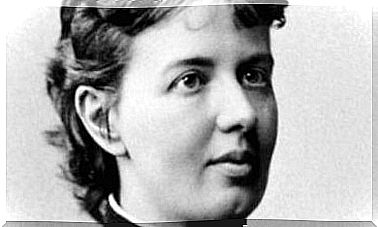Divergent Thinking In Children: A Neglected Skill

Divergent thinking in children is an exceptional gift. Also, it’s natural (no one told you what’s normal and therefore what’s not). His open mind is full of possibilities, unusual reasoning, original and always idiosyncratic. However, sometimes this creative potential tends to fade as they grow up. This is because the educational system tends to standardize the way of thinking of its students, unifying perspectives.
If there’s one thing most of us know, it’s that daring to reason differently can be dangerous. Galileo, for example, proved this in his own skin when his ideas made him spend his last years confined to his home in Florence. Open minds are undoubtedly the ones that challenge the world, but they are also the ones that help it to progress.
It is clear that times have changed, that the endings experienced by other scientists like Giordano Bruno no longer happen. However, other types of situations occur. As noted by Sir Ken Robinson, a recognized expert in education, today’s schools are “killing” children’s creativity.
According to him, our educational centers base their curricular models on the systems of the 19th century, from a time when the industrialization of society meant that some capacities were valued at the expense of others. Promoting innovation, creativity or critical thinking was (and often is) something unusual when what we have is a very rigid hierarchy of disciplines and competences to be assumed.
We forget that children come into the world “equipped” with extraordinary talents. We overlook the potential of their divergent thinking, that extraordinary psychic muscle that we sometimes weaken by educating them exclusively in convergent thinking.

Divergent thinking in children

Preschoolers are true geniuses
Divergent thinking in 4- to 6-year-olds gives surprising results. It is necessary to mention at this point what the professor of neurology at the Harvard Medical School, Álvaro Pascual-Leone, points out. Throughout these ages, what is known as synaptic pruning occurs in the brain .
They are those sensitive periods of the nervous system in which programmed neuronal pruning that is modified only by experience takes place. If there is not adequate stimuli, this cell pruning will limit much of the child’s learning potential over time.
It’s also not about having “too many neural connections”, because then the brain would have an excess of “noise” (something that happens in autism spectrum disorder). Therefore, the key is to optimize this pruning with the most appropriate, most ideal learning and stimulation. Especially in this period between 4 and 6 years, when children have their full potential intact.
How can we protect and improve your divergent thinking?
Divergent thinking in children involves particular learning needs that must be addressed so that learning is not lost. Are the following:
- They need immersive learning. Children must experience, feel, touch, be emotional… They must do it in groups with their peers, but also alone, to encourage autonomous work (and their own space for creativity).
- Likewise, they need to work on learning where there is ( as far as possible ) a single valid answer. Divergent thinking is skillful, generating multiple options for the same challenge. The fact that your ideas are often rejected and identified as “incorrect” or “wrong” creates demotivation.
- To improve divergent thinking in children, it is also necessary that they feel emotionally validated. Feeling that they are accepted, respected, valued and loved will help them feel free to explore, discover new interests, evoke answers, ideas and reasoning knowing they will not be criticized.

Finally, it should be noted that encouraging and protecting divergent thinking does not imply completely eliminating convergent thinking, far from it. In fact, it’s about harmonizing both dimensions. Sometimes there are problems where a single solution is needed. So children also need to understand this kind of situation.
Therefore, let us be able to take care of and optimize these realities. Remember a well-known quote by Albert Einstein: “Everyone is a genius, but if you judge a fish by its ability to climb a tree, it will live its whole life believing it’s stupid.”








